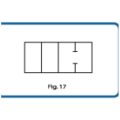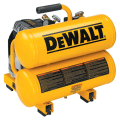Hey! This site is reader-supported and we earn commissions if you purchase products from retailers after clicking on a link from our site.
If you have a Co2 tank and are wondering how to refill it, or whether you can put compressed air into the Co2 tank, this article will provide you with all the relevant information.
Table of Contents
- Filling a CO2 Tank with an Air Compressor
- Filling a Co2 Tank with an Air Compressor Guide
- FAQs (Frequently Asked Questions)
Filling a CO2 Tank with an Air Compressor
Many people ask about refilling a Co2 tank with an air compressor so we will discuss all the relevant things to ensure that if it is done, it is done correctly. First of all, you will need a Co2 tank adapter to allow you to connect the air compressor to the Co2 tank.
You’ll then need an air compressor that is capable of producing up to 3,000 PSI and relevant safety training. I cannot provide you with certified safety instructions but only a guide, so before attempting this task you should seek certified training in order to conduct this task safely.
Note: Co2 tanks may have lower PSI ratings than compressed air tanks!

Filling a Co2 Tank with an Air Compressor Guide
There are 5 tips I can provide you with for using air compressors to fill a Co2 tank.
- Check integrity
- Understand the tank PSI rating
- Use the right-fill adapter
- Empty the tank completely
- Use a high-pressure air compressor
Let’s take a look at these in greater detail!
Check Integrity
All air tanks must have the date of their last hydro-testing printed on their side. In the United States, the majority of tanks are required to be hydro-tested every 5 years. Smaller units may not need to get hydro-tested after their initial test. The date of the last test will be printed on the cylinder in a format like “08C15”.
In this example, the first two numbers in the code give the month (in this case August), while the second two numbers provide the year of the last hydro-test (in this case, 2015). The letter, or in some cases, letters in the middle of the numbers tell you which independent certifying agency approved the cylinder inspection.
If the compressed air tank or Co2 tank has been tested and approved within the last 5 years, it should be okay to use. In the case that it hasn’t, you should first ensure to get it hydro-tested to make sure it’s safe to use.
Understanding the Tank PSI Rating
All tanks have a PSI rating that is usually imprinted on the outside of the canister. It tends to be at the bottom of the canister, on the side. It is written something along the lines of “3AL2000” or “E3000” followed by a long serial number that begins with a letter.
The first sequence of numbers or letters indicates which regulatory authority’s specification the cylinder adheres to. The following sequence of numbers is the PSI rating of the tank. Therefore, in the examples above, the first tank has a PSI rating of 2000 while the second one has a PSI rating of 3000.
Tip: You should never try to fill a tank beyond its rated PSI capacity. If you’re filling a Co2 tank with compressed air, it’s better to underfill than to overfill. If the air you’re using is 100% dry and oil-free, you can fill the tank up to its rated capacity. However, if you can’t guarantee that the air is 100% dry and oil-free, it’s best to underfill the tank to remain on the safe side.
Use the Right Fill Adapter
Compressed air tanks vary from Co2 tanks in that they both have different fittings to help you avoid putting the wrong type of gas in the cylinder. Therefore, you’ll need an adapter to allow you to connect the Co2 tank as if it were a compressed air tank to the air compressor to receive compressed air.
Compressed air tanks vary in their threading depending on their primary use. More often than not, a Co2 tank will have a CGA-347 or CGA-320 threading. Before you go ahead and buy any adapters, ensure you know what threading your air compressor has and what threading your Co2 tank has so you get the right fit.
Note: Without a complete seal, you will not be able to fill your Co2 tank with compressed air.
Empty the Tank Completely
Before adding any air into the Co2 tank, make sure that it is empty. To do so, when attaching your adaptor to the Co2 tank, hook it up to the hose fitting for the air compressor without connecting the Co2 tank to the air compressor itself.
There should be a bleed-off valve that you can open to let any remaining air from the tank escape. Before filling the tank up, ensure this valve is closed upon draining the tank air.
Use a High-Pressure Air Compressor
To fill a Co2 tank, you need a high-pressure air compressor. You cannot fill one fully with a hand pump or any pump meant for tires as they only go to 150 PSI. The air compressor must be able to dispense the correct PSI to match the rating of the tank.
Note: A standard air compressor cannot reach these high PSI levels and does not allow you to fill your tanks at home!
Therefore, you will need a specialized high-pressure air compressor like this Orion Motor Tech High-pressure Air Compressor Pump below. This air compressor is capable of pumping air up to 4500 PSI which is all you need for most home uses. It is available with a standardized fill nipple so that you can plug this in and start using it right away.
- Power: 110V 60HZ; Motor Power: 1.8KW; Charge pressure: 30MPA; Working Pressure: 300BAR 30MPA 4500PSI. Air pump inflating speed: 2800r/min; Work flow: 50L/min; Oil standard: IS0 VG 46 & AW 46.
Prices pulled from the Amazon Product Advertising API on:
Product prices and availability are accurate as of the date/time indicated and are subject to change. Any price and availability information displayed on [relevant Amazon Site(s), as applicable] at the time of purchase will apply to the purchase of this product.
This air compressor has a built-in PSI pressure gauge and bleed-off valve, making it perfect for refilling a Co2 tank with air. The compressor will auto-stop if it gets too hot or if the tank it is filling reaches the maximum pressure of 4500 PSI.
FAQs (Frequently Asked Questions)
Yes, you can put compressed air into a Co2 tank. However, you must be very attentive to ensure you do everything right and avoid catastrophic results. It is possible to do safely by following these steps: check integrity, understand the tank PSI rating, use the right fill adapter, empty the tank completely and use a high-pressure air compressor!
Co2 is a denser gas than compressed air, which means it can be stored at a lower pressure. To store compressed air, you need a far stronger tank that can withstand higher PSI. Therefore, the difference between a Co2 tank and a compressed air tank is that Co2 tanks are typically rated up to around 2000 PSI, and a compressed air tank up to around 4000 PSI.
If you have any questions regarding how to refill a CO2 tank with an air compressor, please leave a comment below, with a photo if applicable, so that someone can help you!






